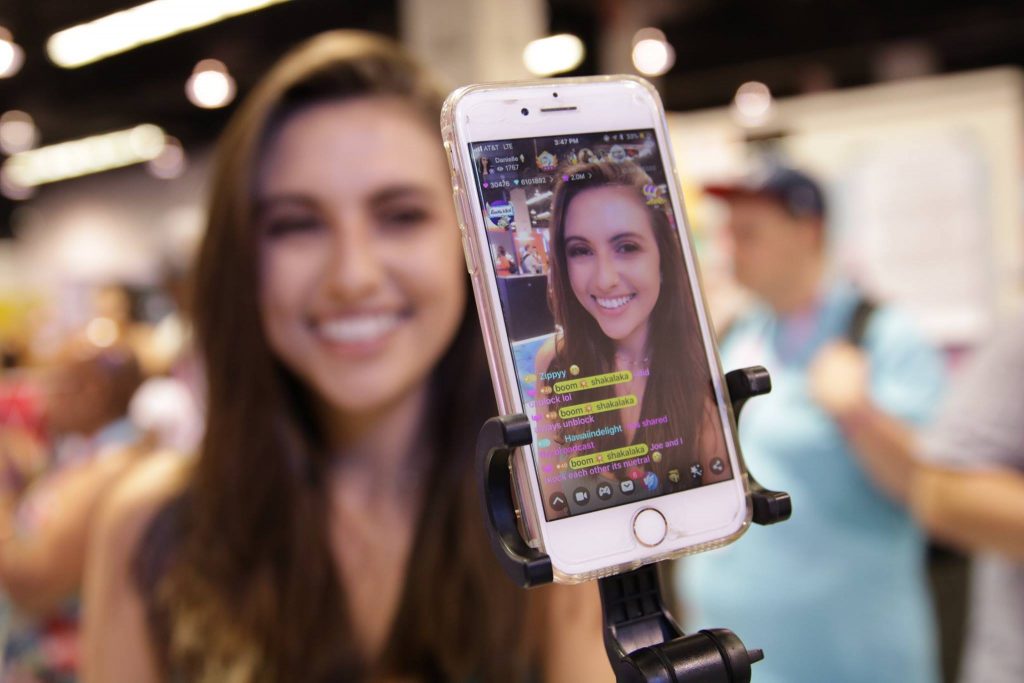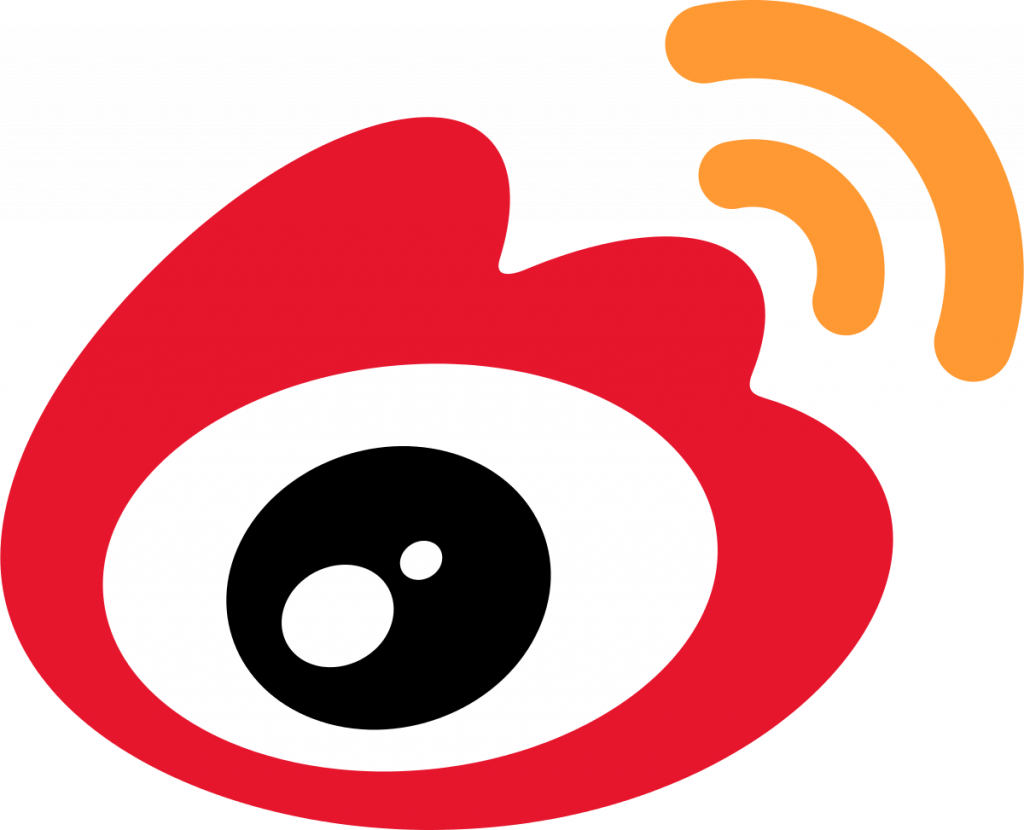What businesses should know about the booming livestreaming industry in the US and China.
“Livestreaming comes naturally to me,” says Danielle Andrade, a digital influencer who has more than 70,000 fans on the livestreaming platform LiveMe. “Conversations flow easily when I’m online, and I can talk about a wide range of things. At the end of the day, your audience really wants to just talk to another person, so all of my broadcasts are simple and improvised. I really enjoy the authenticity of that.”
From Facebook to GoPro, users are livestreaming from every corner of the world, with LiveMe being the most active livestreaming platform in the U.S. with 60 million users.
LiveMe, an East West Bank client, is the fastest-growing independent and live broadcasting app in the U.S., and recently struck a deal with Musical.ly to integrate and combine some of their platforms and communities together. LiveMe’s portfolio also includes Cheez and Fluxr, which are also apps related to video and broadcasting.
“Livestreaming is really more about the unedited and raw connection between people,” says Yuki He, founder and CEO of LiveMe. “Viewing traffic on platforms like Youtube, Instagram and Facebook today are mostly dominated by big influencers and the heavy hitters with media status, so it’s hard for any up-and-coming users to be discovered. On LiveMe, we dedicate a space where everyone can broadcast, connect and interact equally.”
According to Research and Markets, the video streaming market is forecasted to grow from $30 billion in 2016 to $70 billion by 2021, with some of the strongest streamers coming from the Asia-Pacific region. From lip syncs to video games, the content variation correlates with livestreaming’s fragmented audience. For businesses, this may be welcome information, as they can hone in on the audience segment they want to target simply by following their digital consumption trends and interests. Currently, video content on social media generates 1,200 percent more shares than text and images combined, and companies demonstrated higher conversion rates across various channels using video, specifically reporting 41 percent higher web traffic from search engines than non-users.
Who are you livestreaming to?
Since livestreaming broadcasters and audiences skew younger than on traditional social media platforms, analysts predict the trend to continue growing. From Instagram Stories to Periscope, livestreaming has caught the attention of both businesses and consumers alike.
“Our main demographic is between 16 to 30 years old,” says He. “We use both online and offline campaigns to reach our audience. Whether that’s through meetups at our West Hollywood office space, or through fun contests on LiveMe, we always find new ways to engage with our audience.” The company also makes regular visits to university campuses to reach out to platform users to offer them brand ambassadorship opportunities. These ambassadors then organize meetups, host hangouts and create contests for their peers.
For Andrade, livestreaming is a strategy for her career trajectory. “LiveMe gives me an extra bump, because I want to maximize my exposure around the world, and this is a great way to do that,” she says. “The platform allows me to engage with different types of followers, and it’s a good access point for people who may otherwise never see you or get to know who you are.” Andrade also actively cross-promotes her social media accounts, including her LiveMe profile, to increase her clout online. “It’s a great place where you can promote yourself to different companies and reroute a lot of your followers to other platforms,” she explains.
Livestreaming in China versus the U.S.
“The environment between livestreaming in China and livestreaming in the U.S. are so different,” says He. “In China, livestreaming is much more linear, with broadcasters feeding content to the audience without much interaction. In Western countries, though, people are more open and eager to express themselves.” According to He, the sensitivity around censorship, coupled with a culture of humility, discourages many regular citizens from broadcasting themselves online. As a result, those who broadcast tend to be celebrities or affiliated with the media industry. “Most of the broadcasters on LiveMe are regular people who are looking to make friends or express themselves,” she continues. “A lot of our paid users are also broadcasters, which is unique, because in China most paid consumers tend to just watch the content or give gifts to the broadcasters.”
TikTok (Dou Yin in Chinese) is China’s equivalent of a successful video app. Launched in 2016, the app skyrocketed in growth with thousands of users creating short videos, and entered the world of livestreaming in 2017. With more than 300 million domestic monthly active users and more than 150 million daily active users (that’s one in every 10 Chinese) the sheer volume of people tuning in and the added layer for growth and monetization made TikTok one of the most popular Chinese apps and first in the video and photo category. Other popular video and livestreaming apps in China can be found here.
“I chose to launch LiveMe in the U.S. for its market opportunities,” says He. “Our engineering team is in China, but when I had the idea to launch this business, China’s IP intellect was already more advanced than other parts of the world.” Having worked on a number of different apps, including as first-generation product manager of Tencent’s instant messaging social app QQ, He knew that livestreaming and video content were the communication trends of the future. She has also served as director on the board of advisors for the popular video app, Musical.ly, and saw its transformation from a small company in Shanghai to a large U.S. business. “It gave me a lot of confidence to see their growth,” says He. “I know that a lot of other social media platforms have now launched a livestreaming service, but I think LiveMe has other opportunities to insert itself into the U.S. market.”
Becoming a digital influencer
“If you’re trying to be a digital influencer, you have to really put in the work,” says Andrade. “Stream every day using good connectivity, and start your following with strong momentum.” Having acted and modeled since the age of five, Andrade knew that she would be a performer. When she was old enough to move to Los Angeles to pursue her dream of being an actress, she tried to find ways to increase her exposure and fan base. “I started LiveMe in December, but didn’t quite take it seriously until February or March,” she admits. “Once I saw the true business potential of the platform, I started to broadcast two to three times every day for a couple of hours. It’s like a full-time job where you dedicate yourself in front of the camera for six hours a day.”
Investing the time and effort into her broadcasting has paid off, as LiveMe now sustains Andrade’s cost of living. “I pay for my rent and live off of the gifts that my fans give me during livestreaming sessions,” she says.
Digital gift-giving and safety around livestreaming
These digital gifts that Andrade receives are trinkets that have cash value and can be gifted from a viewer to a broadcaster. “People can purchase gifts and trinkets from our platform to give to others,” says He. “It’s like a subscription service, but I didn’t like the concept of paying a fee to get access to content. It felt cold and transactional, so our team made a personalized form of payment through various types of gifts that adds an emotional connection between the viewer and the broadcaster.”
LiveMe’s business model centers on this concept of digital gift-giving, as a portion of each gift purchase becomes a part of LiveMe’s revenue. “It’s actually a really popular concept in China, but people had a lot of doubt when I said I wanted to introduce this idea to the U.S.,” says He. “Two years later, our business is thriving, and it goes to show that giving and receiving gifts are a universally positive experience.”
This unique concept of giving cash-value digital gifts to broadcasters has so far been successful for LiveMe and its broadcasters. “I’ve gotten to that point in livestreaming where I now have a lot of fans who are willing to endorse me with gifts,” says Andrade. “Those who are my biggest fans—top gifters and most frequent viewers—also get to be my admins who gain access to monitoring my LiveMe account.” Admins are roles designated by the broadcaster to their most dedicated LiveMe viewers, and they act as a collective community to support and monitor the online behavior. “You want to dedicate the adminship to someone who’s always going to be on your stream when you’re broadcasting,” says Andrade. “I have five admins who are always there because sometimes the stream may be going too fast, and you could get spammers and those who act inappropriately on the platform. That’s when the admins come in. Half the time I don’t even take notice of the ridiculous messages that are being said in real-time during the broadcast, and afterwards I’ll see that an admin has blocked a person who was acting inappropriately on the stream.”
With regards to inappropriate behavior on the platform, LiveMe has a strict community policy that addresses common online issues such as bullying, sexual misconduct, hate speech, violence, criminal activity, impersonation, and other serious social issues. “We have a dedicated team that spends the entire day reviewing red flags and monitoring content,” says Paulina Bednarczyk, who manages content and talent for LiveMe. “Ours is a zero-tolerance policy, and any violation of our policy can result in the suspension or termination of your account.”
Andrade is unafraid. “You’re bound to have those types of people who pop in and behave inappropriately, and sometimes if they’re messaging me ridiculous things, I’ll share it with my audience in real-time,” she says. “Whether they’re creepers or haters, I’ll be sure to turn the joke around on them.”
This ecosystem of checks and balances, of having admins look out for broadcasters, in addition to the diligent monitoring of LiveMe’s staff, helps the app remain a place where users and viewers can interact. “We’re building LiveMe to be a supportive community platform,” says He. “We want it to be a safe place for people to interact.”
When asked about future projects for LiveMe, He believes that the next step is to connect the platform with a local nonprofit or charity program. “Since our digital gift-giving concept has been so successful,” she says, “I think it would be great if we could do a fundraiser for a charity, so that broadcasters can raise money in real-time, in the form of gifts, for something that aligns with our cause.”
–This article originally appeared on Reach Further










